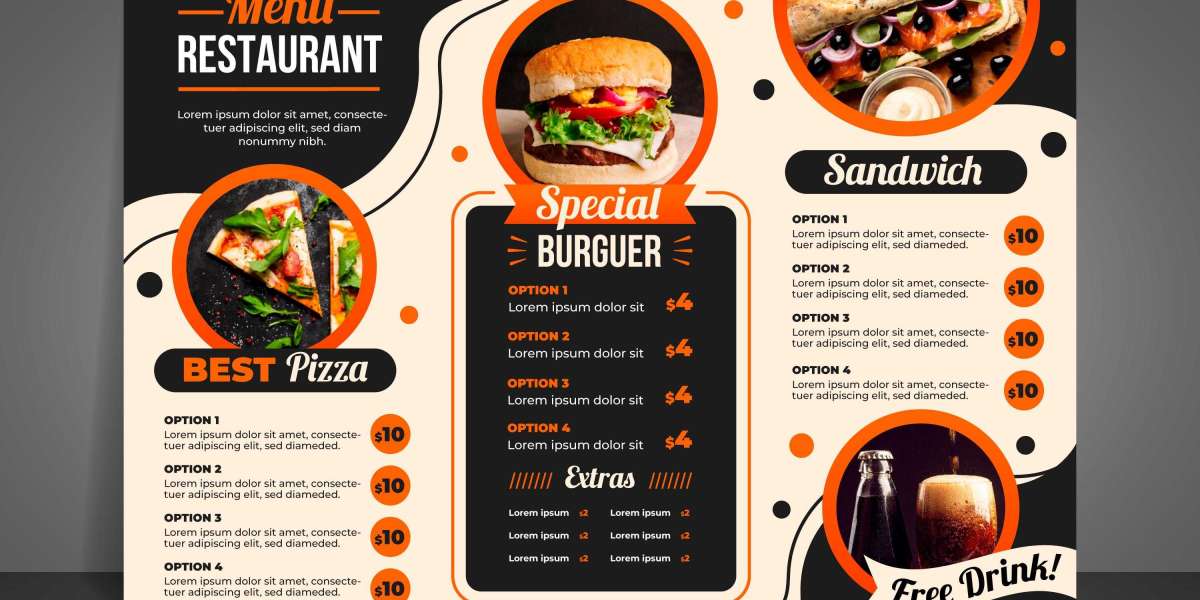One of the most common pitfalls in restaurant menu design is clutter. A crowded, confusing menu can overwhelm customers, slow down service, and dilute your brand identity. Yet, many restaurant owners hesitate to streamline their offerings for fear of losing variety and alienating customers. The challenge lies in reducing clutter without sacrificing the diverse selection that diners crave.
Streamlining your menu doesn’t mean offering less; it means offering better. It means refining your presentation, organizing your content intelligently, and curating your menu to reflect your best, most profitable, and most popular items. Below, we explore practical strategies to help reduce clutter while maintaining variety, ensuring your restaurant menu remains an effective and appealing guide for your customers.
Understanding Menu Clutter
Cluttered menus often result from trying to please everyone. Over time, as restaurants add new dishes, seasonal items, or customer-requested modifications, the menu grows longer and less organized. This results in a disjointed menu where categories blur, item descriptions become overwhelming, and the overall experience becomes frustrating for diners. A menu should invite exploration, not confusion. When diners spend more time reading than eating, or default to “the usual” because the options are too many, you’re missing out on upselling opportunities and reducing overall efficiency.
The Psychological Impact of Menu Design
Studies in behavioral economics and psychology show that too many choices can lead to decision fatigue. When faced with a sprawling menu, customers may delay ordering, choose items they don’t truly want, or rely heavily on server recommendations rather than engaging with the menu itself. Worse, they may leave feeling dissatisfied, unable to pinpoint why the experience didn’t quite hit the mark.
A clear, well-organized menu allows guests to make confident decisions, increases the likelihood of trying new or high-margin items, and enhances the perception of the restaurant’s professionalism and quality.
Step 1: Audit Your Existing Menu
Before you make any changes, start with a thorough audit of your current menu. Review sales data over a significant time period—ideally three to six months—to identify your top-performing items and those that rarely sell. Items that have low profit margins, require uncommon ingredients, or involve complex preparation should also be flagged. This audit allows you to make decisions based on facts, not assumptions.
Ask yourself:
Which dishes are consistently popular?
Which items are rarely ordered?
Are there items that cost more to make than they bring in revenue?
Are any dishes overly complicated to prepare during rush hours?
Based on these insights, you can begin eliminating or reworking low-impact items.
Step 2: Group and Prioritize Menu Items
Another effective way to reduce clutter without losing variety is through intelligent grouping. Instead of listing ten different kinds of pasta across the menu, consider consolidating them into a single “Pasta” section. Grouping similar items gives the impression of variety while creating a more organized structure.
Categorize dishes by type—appetizers, mains, salads, sides, desserts—or by cuisine style, if applicable. Within each category, list items in an order that highlights your strengths. Lead with your signature or most profitable items. People tend to remember and choose items at the top or bottom of a list, a phenomenon known as the “primacy and recency effect.”
You don’t have to remove choices, just present them in a way that feels easier to process.
Step 3: Use Strategic Language and Descriptions
Reducing the length of your menu doesn’t have to mean shortening item descriptions to the point of confusion. On the contrary, streamlined descriptions can be powerful tools that convey the essence of a dish while enticing the diner. Eliminate filler words, avoid redundancy, and focus on flavor, texture, and unique elements.
Instead of:
“Grilled chicken breast served with roasted red potatoes and a medley of seasonal vegetables, topped with a creamy mushroom sauce”
Try:
“Grilled chicken with creamy mushroom sauce, roasted potatoes, and seasonal vegetables”
This version is cleaner, easier to scan, and retains all the necessary information.
Avoid listing every single ingredient unless it’s critical for allergies or dietary choices. Use evocative language sparingly to highlight unique aspects. Aim for clarity and appeal, not word count.
Step 4: Limit Menu Sections and Subcategories
A common cause of clutter is the overuse of subcategories. While breaking down offerings can seem helpful, it can easily backfire when overdone. Instead of dividing your entrees into meat, poultry, fish, and vegetarian options, consider a single “Entrees” section and use small icons or notations to indicate dietary preferences.
Icons such as “V” for vegetarian or “GF” for gluten-free can reduce the need for lengthy descriptions. Similarly, seasonal items or chef’s specials can be listed on a separate insert, chalkboard, or digital display. This keeps the core menu streamlined while still offering room for variety and experimentation.
Step 5: Reconsider the Overall Layout
The layout and structure of your menu are critical to its readability. Effective restaurant menu design guides the diner’s eye in a logical flow, with key items positioned in areas of high visibility. These "hot spots"—usually the top right, top center, and bottom center—are prime real estate for your best dishes.
Use consistent font styles and sizes. Avoid using more than two fonts and limit the use of decorative or hard-to-read styles. Make sure there's adequate spacing between sections and items, allowing the eye to rest and absorb information.
White space isn't wasted space—it enhances focus and reduces mental fatigue.
Step 6: Introduce Rotating Specials Instead of Permanent Additions
When you want to keep variety but limit your main menu, rotating specials are a perfect solution. Instead of permanently adding every new dish or trend, feature them as temporary specials. This not only keeps your main menu clean but also creates a sense of exclusivity and urgency around new items.
Customers are more likely to try a dish if they know it won’t be around for long. Specials can also be used to test new items before deciding if they deserve a spot on the main menu.
These can be promoted through table tents, digital menus, or verbal recommendations from servers. This approach balances innovation and structure effectively.
Step 7: Consider a Digital Menu or QR Code Options
Digital menus provide flexibility and scalability. With a digital format, it’s easier to hide certain items, highlight others, or create customizable views (e.g., filters for vegetarian, spicy, or chef-recommended items). This dynamic approach is increasingly embraced in modern restaurant menu design and aligns well with evolving consumer expectations.
If you’re still using printed menus, consider offering digital supplements for seasonal promotions or expanded options without overcrowding your core menu.
Step 8: Focus on Signature Dishes and Unique Offerings
When trimming your menu, lean into your strengths. What are your restaurant’s signature dishes? What makes your brand stand out? Focus your offerings around the dishes that embody your culinary identity and set you apart from competitors.
If you serve fusion cuisine, highlight combinations that reflect your concept. If you’re known for hand-tossed pizza, lead with those offerings and let the rest of the menu support the core. This kind of brand-centric curation will help you maintain a diverse menu without needing dozens of unrelated items.
Step 9: Solicit Customer Feedback
Before and after making changes, it’s wise to seek input from your customers. Conduct informal polls, invite comments, or ask servers to note customer reactions. If a dish was removed and suddenly there's consistent demand for it, consider bringing it back as a special or limited-time offer.
On the other hand, if no one misses a discontinued item, you’ll gain confidence in your decision to declutter. Customer feedback is essential for balancing efficiency with satisfaction.
Step 10: Train Your Staff on the New Menu
Even the most elegantly simplified menu will fail if your staff doesn’t understand it. Make sure your front-of-house team is fully briefed on the changes, knows the ingredients and preparation methods of each item, and can confidently recommend alternatives to discontinued dishes.
Empowered staff not only improve customer service but can subtly steer choices toward your most profitable or popular offerings.
Maintaining Variety in a Streamlined Format
Reducing clutter doesn’t mean serving fewer types of dishes—it means presenting them in a curated, thoughtful way. Variety can be expressed in different cooking styles, flavors, ingredients, or dietary options within a cohesive framework.
Instead of listing every possible variant of a dish, consider offering one base version with optional add-ons or modifications. For example, a customizable bowl or salad option lets diners build their meal without crowding the menu.
You can also communicate variety through creative plating, seasonal ingredients, or rotating elements while maintaining a consistent core menu.
Conclusion
Effective restaurant menu design strikes a balance between clarity and creativity, simplicity and selection. A cluttered menu confuses customers, reduces satisfaction, and ultimately impacts your bottom line. But with a thoughtful approach, you can trim the excess while enhancing the variety and appeal of your offerings.
Start by auditing your existing menu, identifying what truly matters, and presenting it in a format that highlights your strengths. Use language and layout strategically, limit unnecessary options, and empower your staff to guide the customer journey.
By reducing clutter, you’re not taking something away—you’re making room for your menu to breathe, your dishes to shine, and your guests to fully enjoy the experience.








